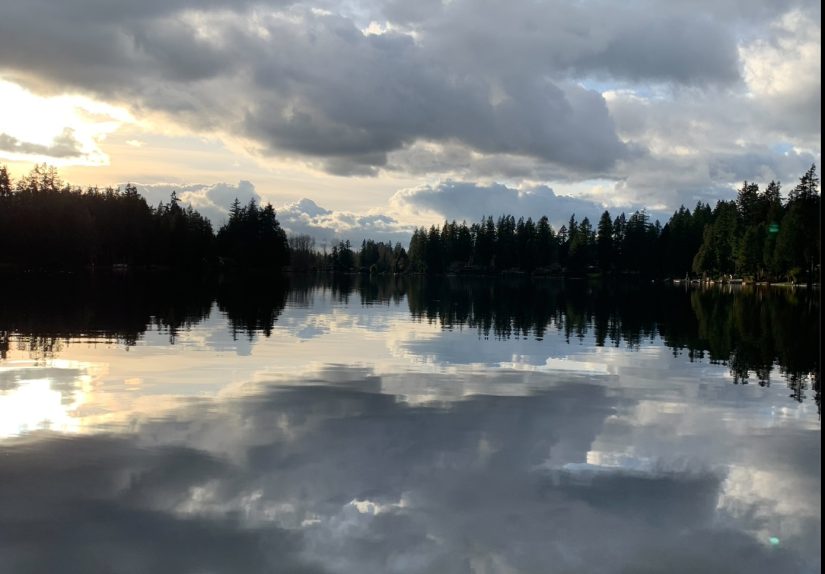Turning up the heat: Revealing lake hotspots using mobile data
You may think aquatic and fishery science is all about fish, whales and oceans, but Iris Haley’s research is demonstrating that essentially anything to do with water is related to this field of study. What is Iris investigating? The link between lake visitation and its relationship with heatwaves using cellphone data!
If you live in Washington, you’re familiar with the much-anticipated summertime when the lakes, rivers and Puget Sound beaches are filled with people enjoying a reprieve from the “Big Dark”. But as our climate becomes warmer and warmer, and more frequently, what does this mean for our lake environments, and the ability of people to enjoy them? The “heat dome” event of 2021 set 128 all-time high temperature records across Washington state, with some places reaching 107 degrees Fahrenheit. For Iris’ project, the definition of a heatwave event is a period of 3+ days in which minimum daily temperature is over a threshold of historical normal temperatures.

Iris is using cellphone user data from telecommunications company, Airsage, to study lake visitation in the face of heatwave events in Western Washington, focusing on 48 lakes primarily located in King and Snohomish counties. “When we call or text, our phone pings from a tower nearby. This can give an estimate of where someone was when they used their phone,” Iris said. This concept may be ringing a bell if you’ve watched true-crime documentaries, but this information is also useful to study things such as visitation to wildlife refuges, or in Iris’ case, lake visitation during heatwaves. “Cellphone data has not yet been utilized to study my specific topic, so it’s an exciting piece of research to work on,” Iris added.
Drilling down into the data, information from Airsage was taken from the lake itself and potential park areas of each lake, for example, beach parks and dog parks. “I looked at the number of unique pings to nearby towers to these specific areas and then compiled it to give a daily estimate of visitation,” Iris shared. Even though the results of Iris’ research are still in the works, it will be interesting to find out any correlation between lake visitation and heatwaves, especially for lakes that Iris grew up near, like Beaver Lake in Sammamish. “Research like this often takes a while to show concrete results, but I’m intrigued to see how different lakes compare to each other in terms of how visitation changes around heatwaves, and why.”

So why study things like this, and what wider impacts could the information generated from this research have? City planning and management is a significant one. “This topic is super interesting in regards to implications for city planning. If a lot of people are going to certain lakes during heat events, then there needs to be more infrastructure to support this influx,” Iris said. “As our summers get hotter, it’s in the city and states best interests to fund parks and lakes where people can take refuge against extreme heat, especially as we continue to urbanize.”
Iris chose this topic when the data was offered by SAFS Professor, Julian Olden. “I had been volunteering as a tech in Julian’s lab for a few quarters when it came to choose my capstone project, so it also made sense to pursue my capstone with him,” Iris said. “I’m also bringing some personal experience into it as a Western Washington local, and someone who gravitates towards my local lake when it gets very hot, so this definitely motivated my interest in this topic!”
Interested in more SAFS undergraduate research stories?